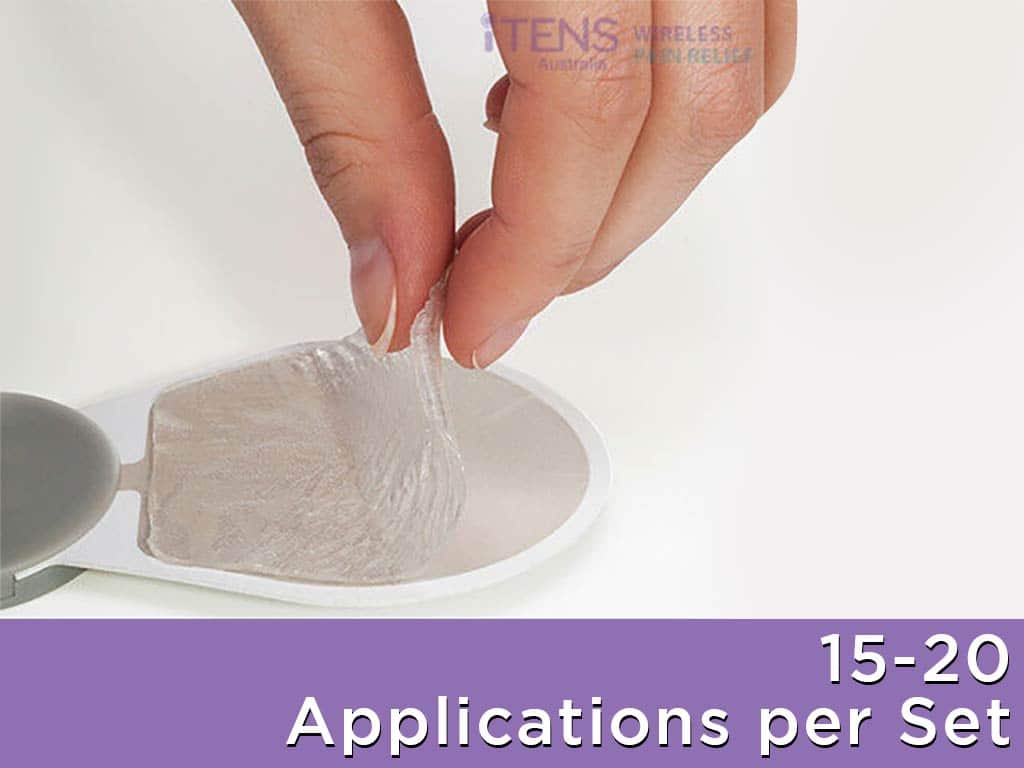
Transcutaneous Electrical Nerve Stimulation (TENS) is beneficial for people with sprained ankles. It relieves pain without invasive methods or medication. It uses electrical currents to stimulate nerves and provide relief. TENS also improves ankle movement and flexibility. To use TENS for sprained ankle, place the pads correctly. Clean and dry the skin before applying. Position the pads around the area of pain. Keep the electrodes a few inches apart for best results.
A sprained ankle occurs when the ligaments in the ankle are stretched or torn. It is a common injury that causes pain, swelling, and difficulty in walking or performing daily activities. It can happen during sports, exercise, or simply by tripping or falling. Fortunately, TENS therapy is a great option for reducing the pain. This article will present the benefits of TENS for a sprained ankle, including the proper pad placement and safety considerations.
Benefits of TENS for Sprained Ankle
TENS can provide numerous benefits for those suffering from a sprained ankle. Firstly, TENS can offer relief from painful symptoms. By using electrical pulses to disrupt the pain signals being sent to the brain, TENS can provide temporary relief from the discomfort. This allows the individual to better engage in their daily activities.
Secondly, TENS is a non-invasive and drug-free form of treatment for a sprained ankle. This is particularly beneficial as it reduces the need for medications and surgeries that can have unwanted side effects. Additionally, TENS can help relax tight muscles around the ankle joint.
Thirdly, utilising TENS for sprained ankle can lead to an enhanced range of motion and function. By promoting muscle relaxation and easing pain, TENS can allow the user to engage in physical activity that may otherwise be restricted. This, in turn, improves their overall quality of life. Overall, TENS can be an effective and non-invasive way to manage the symptoms of a common ankle injury.
How Does an Electrotherapy Work?
- Gate Control Theory of Pain: electrotherapy works by overriding the nerves in the spinal cord that act as pain gate controllers. The electrical stimulation closes the “neural gates”, blocking the transmission of pain signals to the brain.
- Boost blood flow: the electrical currents or mild vibrations increase blood circulation in the affected area. This helps to reduce inflammation, relax the muscles, and promote faster recovery of damaged tissues and nerve regeneration.
- Release of endorphins: the body produces more endorphins, the natural painkillers that help reduce pain and improve overall well-being. Endorphins bind to opioid receptors and inhibit them from sending pain messages.

Proper Pad Placement When Using a TENS for Sprained Ankle
When using a TENS for sprained ankle, proper pad placement is important for effective and safe treatment sessions. To begin, ensure that the skin is clean and dry to guarantee good contact and conductivity of the electrical pulses. Then, position the pads around the injured area to provide temporary relief from pain and discomfort.
People can place the pads in a horseshoe shape around the ankle. They should position one pad on the lateral side and the other on the medial side. This placement allows for the electrical pulses to effectively target the affected area and provide temporary pain relief. It is important to adjust the intensity of the electrical nerve stimulation therapy to a comfortable level.
Additionally, keep the electrodes a few inches apart to ensure the electrical current covers the painful area adequately. Avoid placing the pads directly over bony prominences or areas where nerves are close to the surface. For individuals with limited mobility, it may be helpful to have someone assist with pad placement and adjustment.
How to Operate the Device
To operate the electrical stimulation device for ankle sprains, place the electrodes on either side of the ankle where the pain is located. Then, turn on the TENS unit and adjust the intensity of the electric current to a comfortable level. It is best to start on low levels to prevent any discomfort or potential electrical shocks.
The typical treatment session should last for about 20-30 minutes, with a 30-minute rest time between each session. Once the therapy is over, turn off the TENS device and remove the electrode pads. It is advisable to clean the pads after each use and store them properly.

Safety Considerations When Using a TENS for Sprained Ankle
It is important to consider the safety precautions when operating a TENS for sprained ankle to avoid further injury. Firstly, people should ensure that the electrodes are at a safe distance from the ankle bone to prevent discomfort. Secondly, they have to start with a low-intensity setting and gradually increase it to a comfortable level.
Thirdly, avoid using TENS on broken or irritated skin as this can lead to infection. It is also important to avoid using the TENS unit if the individual experiences severe ankle stiffness. Involuntary muscle contractions could mean there is a serious problem needing medical help.
Fourthly, users need to follow the recommended usage guidelines for the TENS unit. These include the number of times per session and the duration of each session, to prevent overuse and adverse effects. Lastly, it is vital to consult a health professional before using a TENS unit. By following these safety considerations, people can effectively use a TENS unit to manage chronic or acute pain associated with ankle sprains.
When to Seek Medical Help?
There are instances wherein a person with a sprained ankle should seek medical help. For instance, if a person experiences severe pain and swelling in their ankle. Additionally, if the pain does not improve with at-home treatments or if there is a history of recurring ankle sprains.
Moreover, if the swelling lasts for more than a few days, and if there is difficulty in performing functional activities. A doctor may recommend medications, physical therapy and in severe cases, surgery. Therefore, it is important to seek medical attention if any of these symptoms or circumstances are present.
Conclusion
In conclusion, using TENS for sprained ankle brings notable benefits. It offers drug-free and non-invasive pain relief and helps relax muscles while enhancing mobility. Proper pad placement is crucial with clean, dry skin. Placing pads in a horseshoe shape around the ankle optimises effectiveness. Adjusting the intensity ensures comfort and safety. Moreover, keep the electrodes a few inches apart to ensure the electrical current covers the painful area adequately.
Furthermore, safety is important when using a TENS unit. Users should avoid the ankle bone, start with low intensity, and not use it on damaged skin. It is crucial to follow the TENS guidelines and consult a health professional before use. If severe pain, swelling, or if the condition does not improve with home treatment, seeking medical help is crucial. Doctors can offer additional treatments like medication, physical therapy, or surgery for serious cases.







